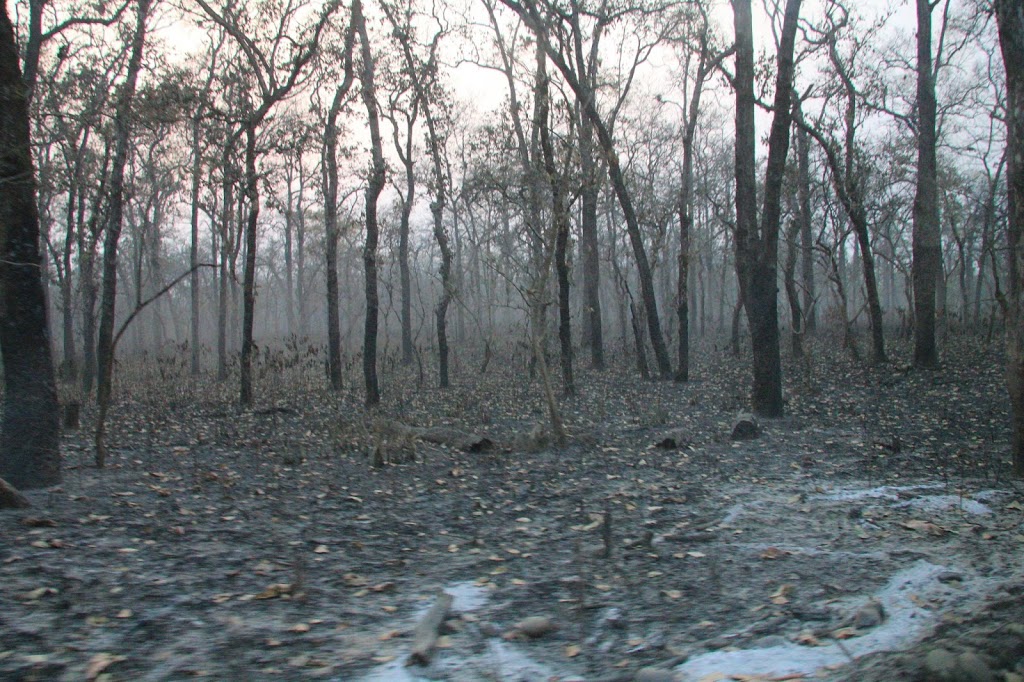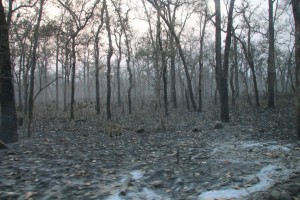Active Mind, Creative Spirit
Chitwan Burning

This is a tough one. There is so much to digest that I probably shouldn’t be writing about it yet. Chitwan is an amazing place. It has shown me things and allowed me things that wouldn’t have happened to me elsewhere in the world. During the car ride out of the National Park, I sat in silence and felt every emotion except hate. I don’t think I hate anything or anyone here, but I feel sadness and hope and desperation…and loss and potential and love, curiosity and wonder. But mostly I want to do something.
Two years ago I walked a piece of the Everest Highway with Milan Lama, a famous Nepali musician from Chitwan. His music is known, loved and emulated across the country. But he is from this tropical, unique, magical place and it is very dear to him. When we spoke, the thing he wanted more than anything was to make a difference for the kids in his home area. He asked for my help. He wanted to improve schools so that children in his community could have hope and a chance for something more than sustenance farming life near the border of India. Shortly after I returned from that trip, I did some research and looked into helping schools in Chitwan. I spoke to him on the phone several times and tried to coordinate something with the school in the village where he grew up. I planted a bug in AC’s ear. That was the impetus for the side-spur trip to Chitwan this time. 7 hours in a jeep over switchbacking dirt roads later, we arrived at Chitwan National Park.
Chitwan National Park offers safaris. Today I got to see a similar village in a nearby area, to see where we, as outsiders can help, what kind of help is needed and what can be done to improve teaching and schools in the area. This happened after 2 days of “safari” or something that was billed as such. It was really more of a circus, similar to Disneyland but with real animals.
The National Park was founded in 1974 (it was the first NP in Nepal) to save the Asian one horned rhinoceros that lives here and nowhere else (except maybe in the mirrored national park in India, just a few miles away). The jumble of hotels that have jammed themselves together inside the park make up a pseudo city and operate like a tourist island and jumping-off point. Mostly-giant European groups book “package deals” which include bird watching, boat rides and elephant baths. Remember when you were a kid and they let you ride the camel around the circle at the zoo? Yeah, it’s that but on meth.
There are elephants and rhinos and deer of all sorts. There are two varieties of crocodile and hundreds of bird species, some of which live nowhere else. Cranes and kingfishers and a critically endangered vulture. I expected it to be a sort of eco-safari. “Through the jungle” they kept saying. The clouded leopard, fishing cat, jungle cat and highest population of sloth bears are all here. And the Bengal tiger. God, I wanted to see one of those… I imagined something that allowed me to see wildlife in its habitat like um, Africa? Instead, 20 elephants took off tromping through the jungle together in search of wild animals. Each had 4-5 people on it’s back plus a driver. That’s over 100 people, hooting, gawking, doing those ridiculous crowd-mentality things that people do when in such numbers. And while some of them were Nepali, all of them were tourists. Except the elephant drivers who wielded metal hooks with pokers on them and shouted commands.
They’re rough around the edges. There are a lot of needs just to handle the park. One of the local tribes that were displaced, in order to found the park are the Tharu people. They live in stick and mud houses and forage the jungle for most of their needs. They have been allowed to stay inside the park and continue utilizing the jungle and park for their sustenance. So not only does the park need naturalists, vets, and botanists, in order to realize all that there is to lose, they need docs, anthropologists, and diplomats to both blend and improve the situation for the people as well as the animals. A pretty impossible undertaking when you consider the fact that the core government serves no useful function down here.
God, there is so much need, just for the national park. And did I mention the burning? Oh, yeah, the title. One of the “management practices” they use here is to burn the jungle (‘to emulate forest fires” we were told) and encourage the growth of new grasses to feed the rhinos. Except that from what I see, something like 60-80% of the jungle is burned, charred, still smoking, or not yet re-grown. Maybe all that changes in 2 months when the rains come, but right now the skies are a sullen shade of gray. We never saw the sun during the day. It rose and set ruby-red through the haze, then disappeared behind thin gray layers like it does in Seattle. Except hotter. Tropical. Fire smoke was so prevalent that my nose ran and eyes burned for most of the time. You’ll see it in the photos. It feels desolate and desperate like a stone cast into a pond to see what the ripples do.
I was left with a ton of questions. But it was time to move on.

So interesting…. And here in the US they don’t allow fires in the Redwood Forests because “we” were trying to protect the trees. This has actually caused issues and now there are no new growth. The redwoods have to have the floor burnt so thier seedlings will have a place to grow. Very interesting and curious to read more
Pingback: Facing Chitwan - From My 'Art